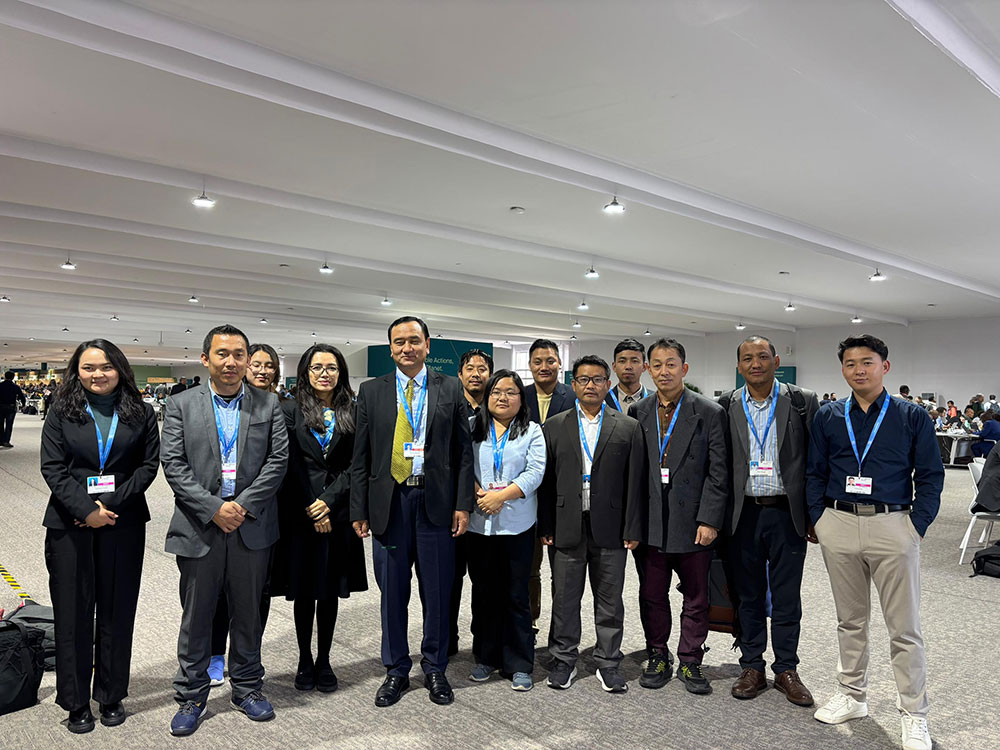Yangyel Lhaden
Baku, Azerbaijan— The first week of the 29th Conference of the Parties (COP29) summit, held in Baku, the capital city of Azerbaijan, ended on November 16 with little progress on key issues, as sharp divisions between developed and developing countries stalled negotiations on climate finance, trade measures, and equitable responsibility for climate action.
Dubbed the “Finance COP”, this summit is expected to make substantial strides toward addressing the global climate funding gap. One of the most closely watched outcomes is the establishment of a New Collective Quantified Goal (NCQG) to replace the now-expired USD 100 billion annual climate finance pledge—a target that was never fully met.
The NCQG is intended to surpass its predecessor and ensure that developing nations have access to the financial resources necessary to combat and adapt to climate change.
Countries need to collectively invest trillions of dollars to achieve the NCQG, which aims to build clean energy systems, adapt to a rapidly warming world, and address the aftermath of climate change-induced disasters.

Bhutanese delegation debriefing negotiations to head of delegation

Protestor demand climate finance to be delivered at COP29
For Bhutan, one of the most vulnerable nations to climate impacts, the need for financing is acute. The country’s Nationally Determined Contribution (NDC) report estimates that Bhutan requires USD 385 million for adaptation and USD 600 million for mitigation in the short term.
While Bhutan has been securing climate funds from various sources, accessing these resources remains a cumbersome process.
At COP29, developing countries, including Bhutan, are demanding that climate finance for adaptation, loss and damage be grant-based, with highly concessional financing for mitigation from the countries most responsible for greenhouse gas emissions.
However, deep disagreements over the mechanisms of climate finance, including how and when the funds should be allocated, have caused an impasse in the negotiations.
A draft of the NCQG released on Saturday addressed some of the technical issues, such as access to funds, transparency, and factors influencing financial progress. But significant political hurdles remain mainly due to the complex structure of the goal.
The ongoing debate centres on whether the NCQG should be a single-layer goal or a multi-layered structure with a broader range of financial sources. This debate has further highlighted the rift between developed and developing nations.
Global Climate Justice Lead at ActionAid, Teresa Anderson, called on wealthier nations at COP29 to step up their financial commitments, stressing that developing countries are bearing the brunt of the climate crisis. “If we are serious about climate action, we have to pay for climate action,” she said, criticising the debt faced by frontline nations recovering from disasters like floods and droughts.
She emphasised the need for trillions in annual grants from developed countries, contrasting this with the USD 28–35 billion they provided in 2022, which was less than half of what the world spent on ice cream.
She rejected loans as climate finance, warning that they deepen debt and fossil fuel dependence, and accused wealthy nations of turning the crisis into an investment scheme for corporate profit.
“Paying for ambitious climate action now will be far cheaper than the cost of catastrophe later,” Teresa Anderson said, urging the global north to meet their obligations and fund the transition to a livable future.
The Director General of International Centre for Integrated Mountain Development’s, Dr Pema Gyamtsho (PhD), expressed high expectations from COP29 as it is labeled the Climate Finance COP. “We really hope that there will be an agreement among parties not only on increasing finance for climate action but also on enabling access to these finances.”
He stressed on the urgent need for climate finance in the Hindu Kush Himalayas—of which Bhutan is a part—to address the impacts of climate change and loss and damage from climate-induced disasters.
One of the climate finance mechanisms is expected to come from carbon trading under Article 6 of the Paris Agreement on international carbon markets, which includes both market-based and non-market approaches.
Article 6.4, adopted on the first day of the summit, focuses on creating an international carbon market to help countries meet their climate goals through trade in emissions reductions. So far, it has been one of the major breakthroughs at COP29.
This system allows countries to buy credits for removing or avoiding planet-warming pollution, such as through tree planting or rainforest protection.
While this is viewed as tangible progress, Article 6 has faced long-standing issues since the Paris Agreement was signed in 2015. Despite progress, negotiations have not yet clarified the methodology for its implementation.
As negotiators head into the second week, the stalemate casts doubt on whether COP29 will yield actionable outcomes. With COP30 set to take place in Brazil next year, the results in Baku are expected to shape the global climate agenda in the months ahead.
This story was produced as part of the COP29 Climate Change Media Partnership, a journalism fellowship organized by Internews’ Earth Journalism Network and the Stanley Center for Peace and Security.


